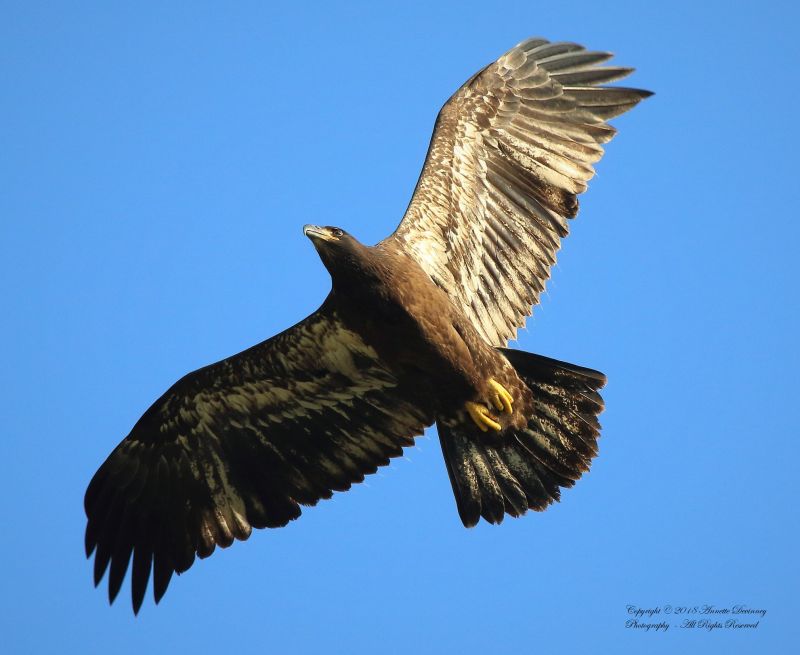
Young bald eagles can be hard to identify because they don’t have white heads and tails. To complicate matters, our field guides show a very similar bird, the golden eagle. How can you tell if a large dark bird in western Pennsylvania is a bald eagle? Here are some tips, plus a comparison to golden eagles.
First, make sure the bird is not a turkey vulture. See V Is For Vulture for details.
Second, the location, time of year, and habitat are your best clues to its identity.
- Location and time of year:
- Bald eagles are year round residents of Pennsylvania. Their population is booming.
- Golden eagles are rare in eastern North America and only seen at Pennsylvania hawk watches during fall and spring migration.
- Habitat:
- Bald eagles eat fish and are found at rivers and lakes. They are tolerant of human settlements and will nest in suburbs or towns near water.
- Golden eagles eat meat and are found in open country such as mountains, cliffs, tundra, grassland and deserts. They avoid human settlements.
Third, you’re ready to look at plumage with this caveat: I am not an expert at aging immature bald eagles. If you have tips, photos or corrections please leave a comment.
BALD EAGLE FIRST YEAR PLUMAGE: (“first year” and “juvenile” are synonymous)
In their first year of life juvenile bald eagles have dark gray beaks, dark brown feathers overall with variable white mottling under their wings and tails. The photo at top by Annette Devinney shows the white mottling seen in flight.
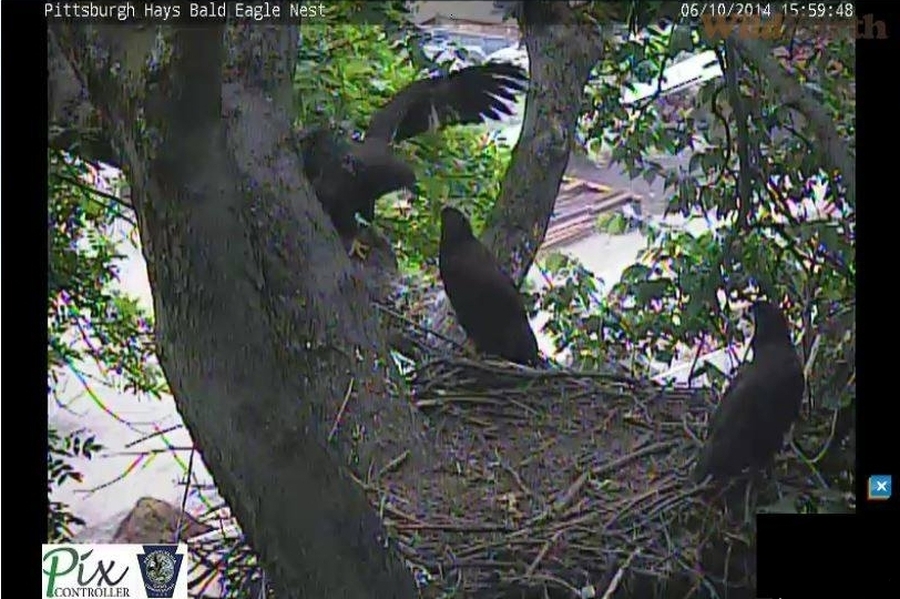
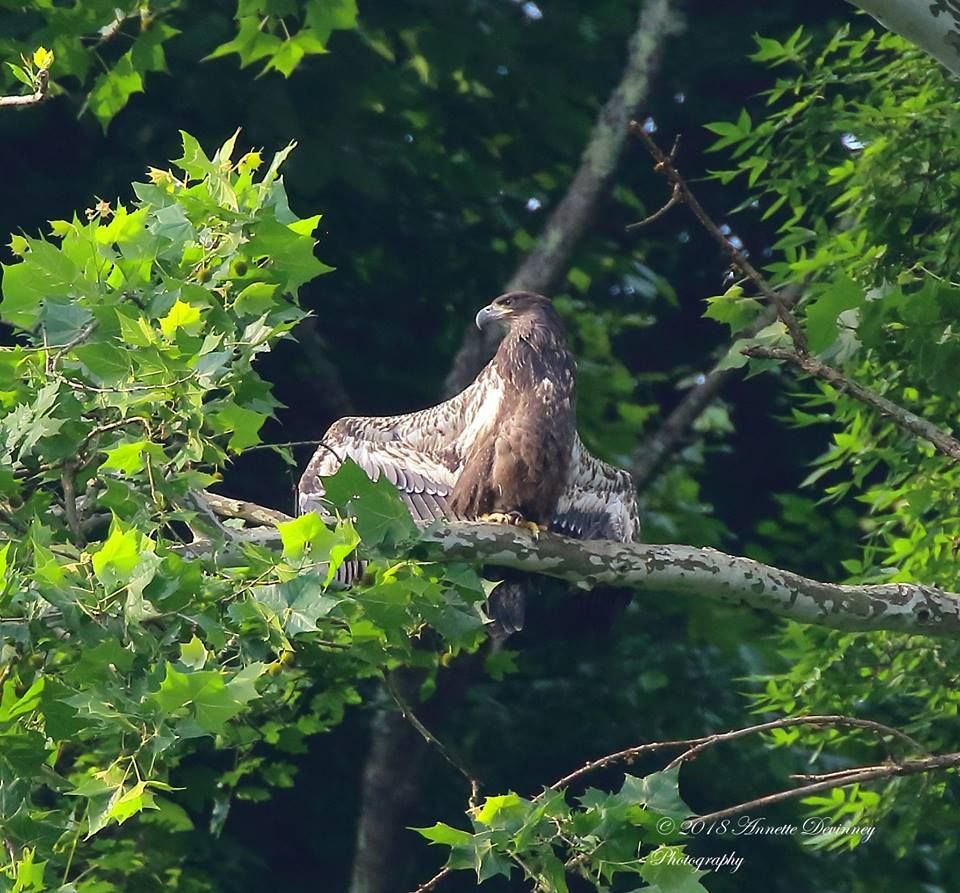
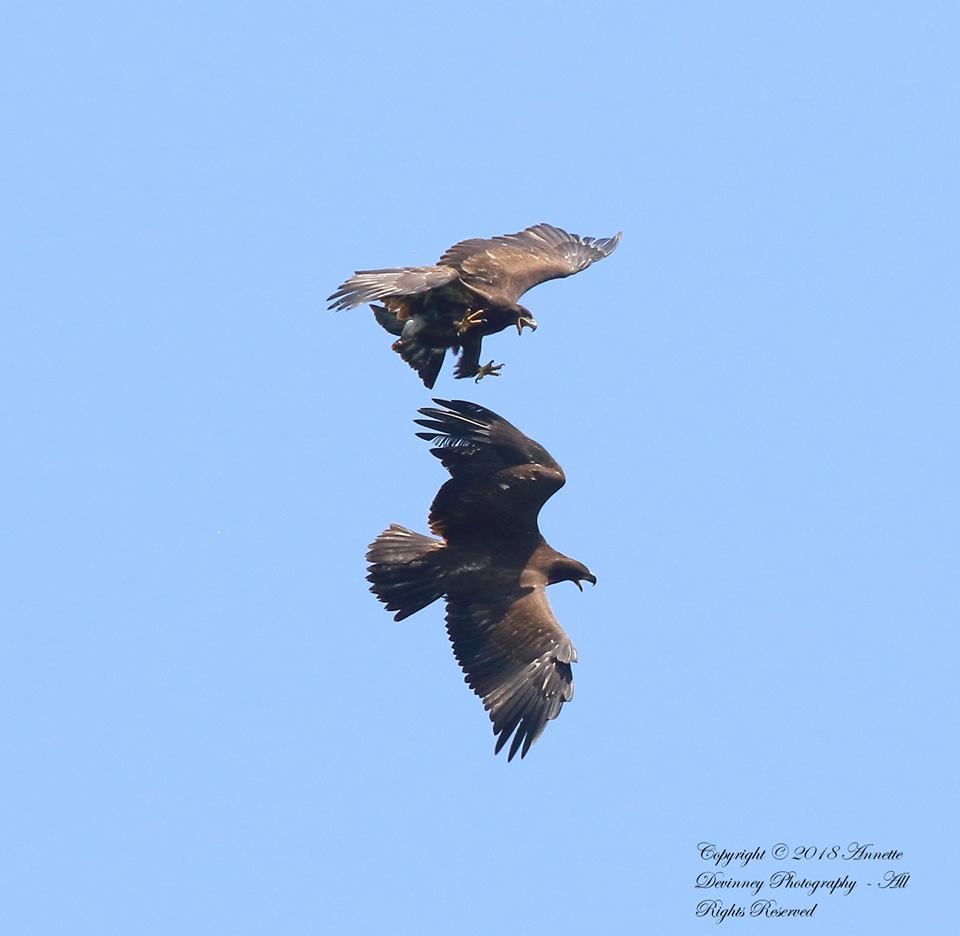
SECOND AND THIRD YEAR PLUMAGE: (called “immature” birds)
In their second year bald eagles turn whiter with additional mottling on their backs, bellies and wings. Still mottled in their third year, their bodies darken while their heads and tails turn whiter.
Second year birds may show uneven trailing edges on their wings because first-year flight feathers are longer than those of older birds. This bird shows a mix of old and new feathers.
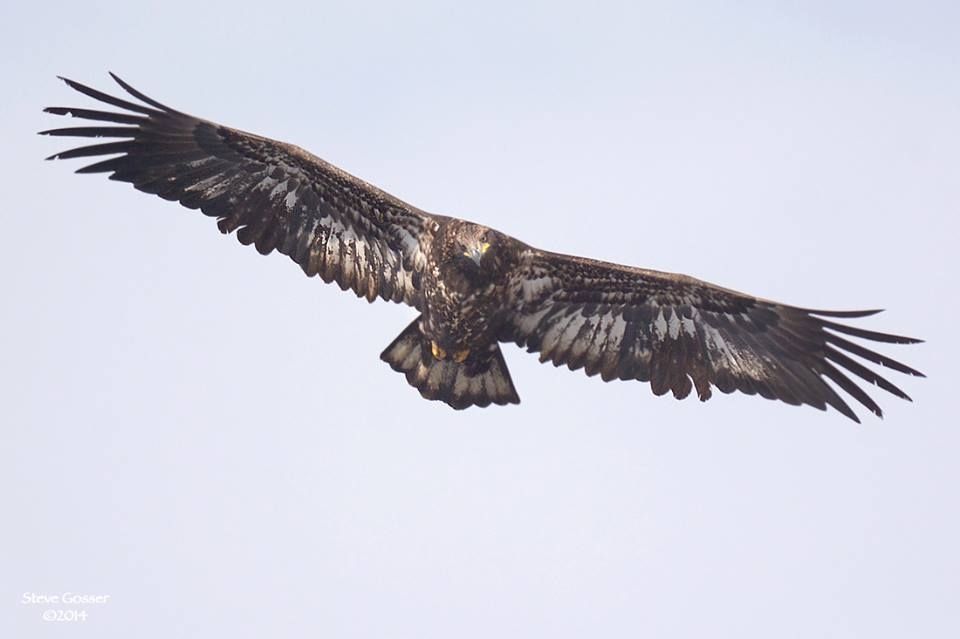
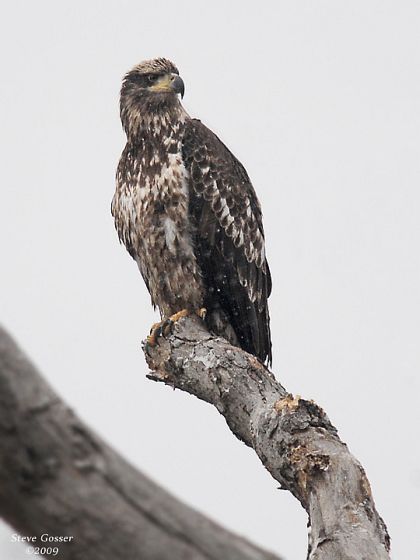
FOURTH YEAR PLUMAGE: (nearly “adult,” may nest at four years old)
Bald eagles complete their adult plumage in their fourth year. Their heads and tails have a slightly dirty appearance due to a few dark feathers. In 2013 the new Harmar female had some dark tail feathers, below. She was probably only four years old.
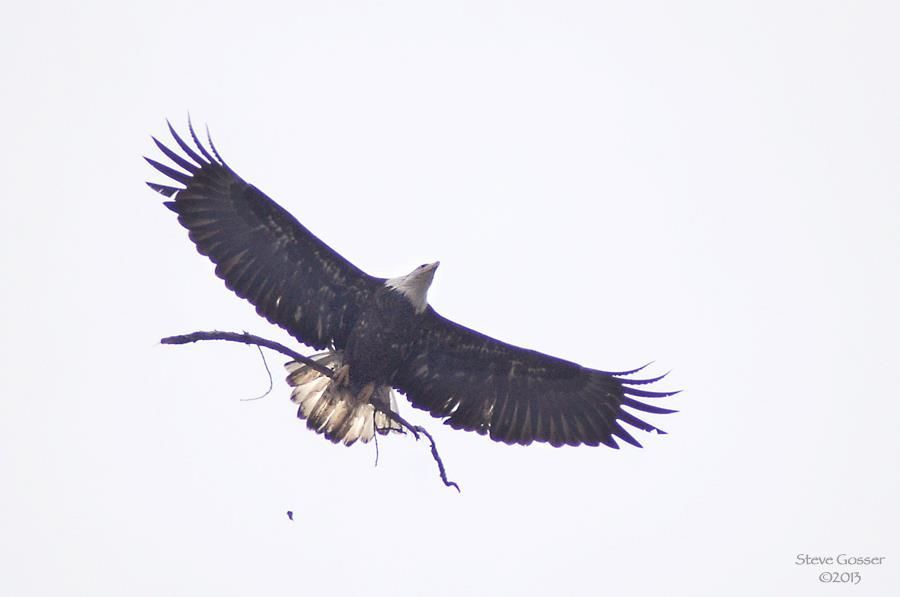
FULL ADULT PLUMAGE: (fifth year and beyond)
Adult bald eagles with white heads and tails cannot be mistaken for any other North American bird. In the photo below, the Hays female carries a fish to her young.
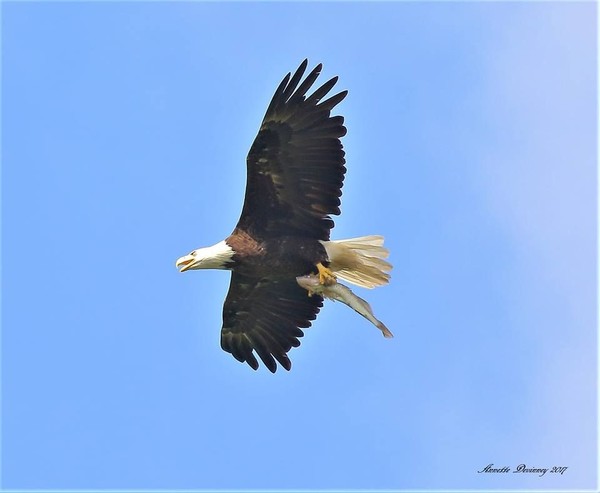
COMPARING GOLDEN AND BALD EAGLES:
Juvenile bald eagles resemble golden eagles in size and coloration. However …
Golden eagles are dark brown with golden feathers on the nape of the neck. Adults have completely dark underwings and tails. Immatures have a white band at the base of the tail and dark underwings, not mottled, with either a white line down the middle of the wing or a white half moon at the wrist (see below). Golden eagles’ heads look smaller than bald eagles’ because their beaks are smaller. Here are two photos of golden eagles in flight at the Allegheny Front by Steve Gosser.
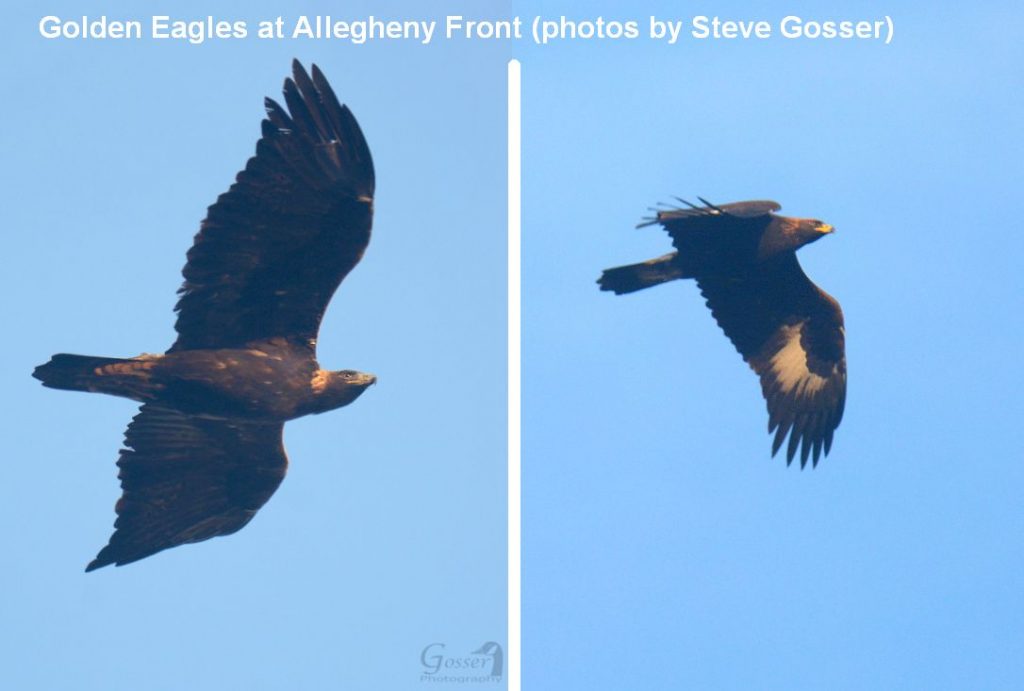
Finally, golden eagles are extremely rare in Allegheny County, even as flyovers, while bald eagles are resident year round if the rivers don’t freeze. An all-dark eagle near Pittsburgh is most likely a juvenile bald eagle. It may have been born here.
Learn more about aging bald eagles and comparing them to goldens at these links:
- How to Age and Identify a Juvenile and Sub-adult Bald Eagle at Avian Report
- A Guide to Aging Bald Eagles and How to Distinguish Immature Bald Eagles from Golden Eagles from Feathered Photography
- Molting Sequence and Aging of Bald Eagles by Mark A. McCullough in SORA, March 1989
(photos by Annette Devinney, Steve Gosser and the Hays Bald Eaglecam)
Perfect! What I saw must have been a first or second year old bald eagle. Thanks for this post!
Thanks for this post. I live on the Mohawk River near Albany, NY, and have often wondered about this when no white heads or tails are visible. We get lots of what I now know for sure are bald eagles, even in the winter on the frozen river. Based on your post, we probably never get golden eagles, so no more confusion!
It’s interesting how their beaks turn from gray to yellow as they get older. How does that happen?
I’m not sure how it happens but it is very typical in birds. Bald eagle beaks change from gray to yellow. Northern cardinal beaks change from gray to orange. The beak color is an indication of breeding age.
I saw a bald eagle with a white tail and still a brown head. It was smaller so probably a juvenile. Any thoughts or comments?
Duane, young bald eagles still have dark heads — they take about 4 years to get adult plumage — so age is determined by plumage. Sex is determined by size. The males are noticably smaller than the females.